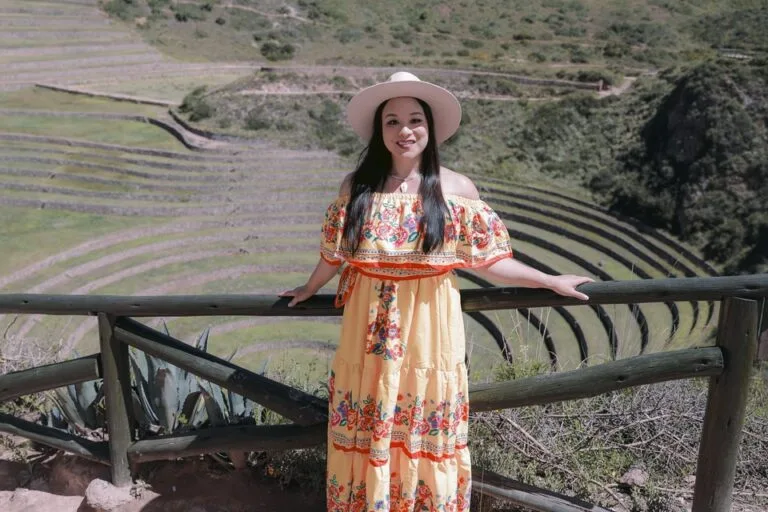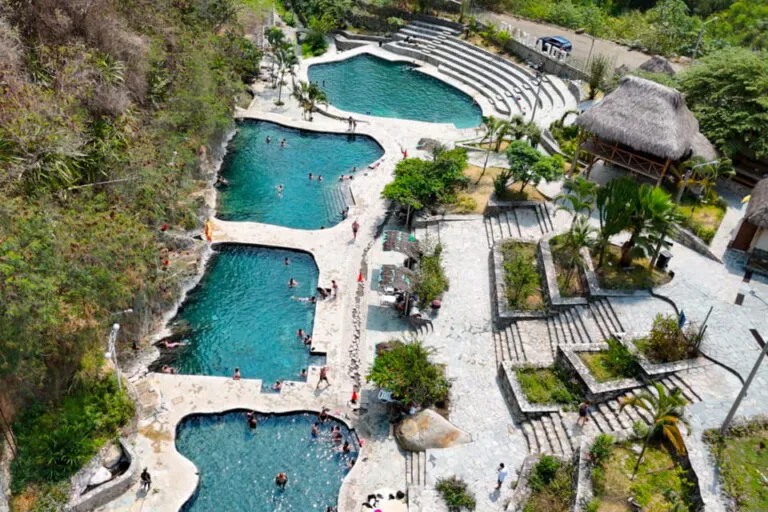Amidst the undulating hills just outside Cusco, the archaeological complex of Q'enqo stands as a testament to intricate Inca ceremonial architecture and enduring Andean cosmology. Visitors encounter a landscape where stone becomes both altar and riddle, offering traces of ritual practices that remain partially veiled by time and colonial destruction.
The Context and Meaning of Q'enqo
Q'enqo, sometimes spelled Qenqo, Kenko, or Q'enco, is one of the most enigmatic sites in the Sacred Valley region. Its name derives from the Quechua word “q'inqu,” meaning “zigzag” or “labyrinth,” which accurately reflects both the literal channels incised into its monolithic stones and the metaphoric complexity of its purpose. Archaeological consensus places its construction during the final phase of the Inca Empire, likely in the 15th century, though exact dates remain uncertain due to limited written records from pre-conquest times.
The Spanish chroniclers, notably Pedro Cieza de León and Garcilaso de la Vega, described Q’enqo as a place strongly associated with indigenous rituals—an identity that became a reason for targeted destruction during early colonial repression of Inca religion. While approximately half of its stonework was damaged or dismantled after the conquest, much remains remarkably intact. Today, Q’enqo is part of the Sacsayhuaman Archaeological Park system and is protected as a national heritage site by Peru’s Ministry of Culture.
The interest in Q'enqo among researchers stems not only from its architecture but from what it reveals—or withholds—about Inca spiritual life. The stone labyrinths, carved altars, and subterranean galleries invite speculation regarding their ritual uses while grounding visitors in tangible Andean history.
Geographical Setting: Where Is Q'enqo?
Q’enqo is located on the northern outskirts of Cusco, Peru, roughly four kilometers from the city’s historical center. Situated at an elevation of approximately 3,580 meters above sea level on Socorro hill, it forms part of a highland plateau overlooking the valley below. This position places it on an important route between Cusco and Pisac—a corridor rich in archaeological remains.
The site consists of two principal sectors: Q’enqo Grande (Big Q’enqo) and Q’enqo Chico (Small Q’enqo). Both are accessible via paved roads leading from Cusco, and visits are frequently combined with nearby complexes like Sacsayhuaman, Puca Pucara, and Tambomachay. Public transport passes close to the park entrance, although many travelers opt for organized tours given the site's location outside city limits and lack of on-site amenities. The climate is typical of high-altitude zones: dry and sunny between May and September; rainy from October through April. These seasonal differences can affect not only visitor comfort but also visibility inside Q’enqo’s subterranean chambers, where natural light varies dramatically throughout the year.
The surrounding landscape is composed mainly of ichu grasslands interspersed with eucalyptus groves introduced in modern times. From certain vantage points within Q’enqo Grande, one can observe both ancient terraces and contemporary agricultural activity—an ongoing dialogue between past and present land use in this corner of the Andes.
Structural Features: The Architecture of Q'enqo
The core identity of Q’enqo lies in its sculpted limestone outcrops transformed into ceremonial stages through expert Inca masonry. Unlike other major imperial sites that feature finely joined polygonal walls (such as Machu Picchu or Ollantaytambo), Q’enqo’s monumental rocks are intricately carved rather than assembled from separate blocks.
A defining feature is a large semi-circular plaza—often referred to as an “amphitheater”—approximately 55 meters long. Along its perimeter stand a series of shallow niches hewn directly into the bedrock; while their original purpose is debated, they may have supported wooden lintels or held ritual offerings during public ceremonies. At the center rises a solitary stone monolith nearly six meters tall whose original shape has been obscured by weathering and deliberate defacement during colonial iconoclasm. Archaeologists suggest it may once have depicted an animal motif or held symbolic value as “huaca,” a sacred object imbued with spiritual power.
A remarkable zigzagging channel runs down one side of this monolith—a detail echoed elsewhere at Q’enqo Chico—suggesting ritual liquids such as chicha (maize beer) or animal blood were poured here to flow through predetermined paths during ceremonies. Traces of red pigmentation have been documented along these channels, providing material evidence for sacrificial activities described in Spanish chronicles.
The Underground Chamber: Ritual Space Below Ground
Beneath the monolith lies perhaps the most evocative space at Q’enqo: a series of subterranean chambers carved entirely within a single boulder. Accessed by narrow steps descending into cool darkness, these rooms contain polished stone slabs that have been interpreted as altars or embalming tables.
This chamber’s function remains contentious among scholars due to limited direct evidence. Some propose it was used for mummification—consistent with Andean funerary customs wherein elite bodies were prepared for secondary burial or ancestral veneration ceremonies. Others point to grooves along the floor designed to channel fluids away from ritual tables as indicating animal sacrifices rather than human burials; no confirmed human remains have been found in situ.
The interior also features trapezoidal niches reminiscent of those found in Inca temples elsewhere—perhaps intended for sacred objects or effigies during rites conducted in darkness and silence below ground level. Ethnographic studies comparing modern Quechua ritual spaces underscore how these underground environments evoke Pachamama (Mother Earth), reinforcing theories that Q’enqo’s lower chamber symbolized a return to the earth during key annual festivals like Inti Raymi or Capac Raymi.
Ceremonial Functions: What Was Q'enqo Used For?
The exact role played by Q'enqo within Inca religious life is still debated due to gaps in archaeological data and conflicting colonial accounts. However, several overlapping functions are generally recognized based on material evidence and regional context:
- Ceremonial Center: The amphitheater-like space suggests gatherings for important rituals, possibly state-sponsored events involving priests (vilcas) and local nobility.
- Sacrificial Site: Grooved tables and zigzag channels indicate offerings poured onto stone surfaces—likely including maize beer (chicha), coca leaves, llama fetuses (a common Andean offering), or animal blood during solstice festivals.
- Astronomical Marker: Cylindrical stone pillars on an upper platform have been identified as potential Intihuatana (“place where the sun is tied”) markers used for tracking solar events; however, damage makes this interpretation tentative compared with more complete examples at Pisac or Machu Picchu.
- Mummification/Embalming: Some specialists connect Q’enqo’s cool inner chamber with Andean mortuary practices known from other high-status burials around Cusco; yet no direct association with royal mummies has been archaeologically proven here.
Certain local oral traditions assert that secret rites took place at night or during specific astronomical alignments—a theme consistent with broader Andean beliefs about liminality (the transition between worlds) embodied by caves or underground spaces. While much interpretation remains speculative without direct written testimony from Inca priests themselves, material traces at Q’enqo align strongly with patterns observable across other key sanctuaries in Tawantinsuyu (the Inca Empire).
The Impact of Colonial Erasure: Destruction and Cultural Memory
The history of Q’enqo after Spanish conquest is emblematic of broader efforts to suppress Andean religions throughout Peru during the 16th and 17th centuries. Unlike some major huacas within Cusco proper that were razed entirely to make way for churches (for example Coricancha/Santo Domingo), Q’enqo was not built over but suffered systematic partial destruction aimed at erasing indigenous cultic symbolism.
This targeted vandalism is visible today: defaced monoliths where animal figures once stood out clearly; niches whose edges have been deliberately blunted; pigment residues indicating attempts to scrub away painted motifs associated with pre-Christian cosmologies. According to Victor Angles Vargas—a respected Cusco historian—up to fifty percent of original structures were toppled or damaged following orders from ecclesiastical authorities intent on extirpating “idolatry.” Unlike some later reconstructed sites, what survives at Q’enqo preserves both intentional preservation by local communities (often at personal risk) and scars imposed by outsiders hostile to ancestral traditions.
This legacy continues to provoke discussion among Peruvian scholars about cultural resilience versus loss. Local Quechua-speaking residents often maintain parallel narratives about sites like Q’enqo: mainstream archaeological descriptions coexist with oral histories emphasizing ancestral power still believed present in certain stones or underground chambers. Such dual perspectives offer visitors unique insight into how memory endures under pressure—and why places like Q’enqo remain sites not merely for tourism but active cultural negotiation.
Differentiating Between Q'enqo Grande and Q'enqo Chico
Q'enqo Grande, closer to main access routes and receiving most visitors’ attention, contains all major features described earlier: amphitheater plaza, underground chamber, monolithic altar, zigzagging channel, and remnants attributed to astronomical observation devices. Its scale reflects probable use for regional gatherings involving numerous participants—perhaps even imperial processions departing from central Cusco toward Sacred Valley sanctuaries during calendar feasts like Inti Raymi.
Q’enqo Chico, located roughly 350 meters eastward amid eucalyptus woods planted in recent decades, is smaller but shares core characteristics: carved channels traversing rock outcrops; evidence for offerings poured down artificial grooves; scattered niches suggesting more intimate rites possibly restricted to specific kin groups or priesthoods (“hamaut’a”). Archaeological surveys suggest both sites may have functioned together as parts of an extended ceremonial circuit encircling ancient Cusco—the capital envisioned by chroniclers as “the navel of the world.”
The presence nearby of another sculpted formation known locally as Cusilluchayoc (“place of monkeys”), adorned with zoomorphic reliefs difficult to date precisely but typical of late-Inca flourishes found throughout this region, further supports theories that multiple small sanctuaries served complementary roles within wider ritual geography rather than acting as isolated shrines.
Cultural Interpretations: Living Memory Around Q'enqo
The significance attached to Q’enqo among contemporary Cusqueños extends beyond archaeological curiosity into spheres of living heritage practice. Particularly during solstice periods (June 21–24), when Inti Raymi festivities fill central plazas but also echo across surrounding hillsides—including at Sacsayhuaman nearby—it is not uncommon for local community groups to visit lesser-known sanctuaries such as Q’enqo Grande before dawn with offerings ranging from coca leaves to yellow flowers symbolizing renewal.
This practice bridges pre-Hispanic cosmovisions centered on reciprocity (“ayni”) between humans and non-human powers—most notably Pachamama/Mother Earth—with syncretic Catholic traditions introduced since conquest. Although overt sacrifice no longer occurs publicly at these stones due to legal prohibitions established since early Republican times (19th century), small-scale libations using chicha de jora continue discreetly under guidance from elder shamans (paqos) recognized within rural ayllus extending across greater Cusco Province.
Younger generations exposed both to global tourism narratives and revitalized indigenous knowledge movements often articulate pride in sites like Q’enqo not just as tourist attractions but repositories for “ancestral technology”—a phrase increasingly employed locally to refer to sophisticated engineering absent modern machinery yet aligned closely with seasonal cycles rooted deep within Andean memory-scapes (example resource: Ministerio de Cultura del Perú - Manuel Chambi profile). This ongoing relationship underscores why respectful visitation matters at such locations—for locals they remain more than ‘ruins’ but nodes within continuing spiritual ecology linking city dwellers with their highland ancestors.
The Experience for Modern Visitors: Practical Information and Insights
Q'enqo, though less crowded than Sacsayhuaman or Machu Picchu, draws thousands annually seeking alternative encounters with Inca heritage just minutes from downtown Cusco. The infrastructure reflects this dual status—a mix between open-access paths maintained by national agencies and more rugged trails favored by independent hikers exploring adjacent woods toward Tambomachay or Puka Pukara on foot.
- Tours typically last under two hours when combined with other nearby sites but allow longer independent exploration if desired; interpretive panels are basic so hiring a licensed local guide knowledgeable about Quechua terminology can enrich understanding greatly.
- No indoor facilities exist onsite; bring water (and sun protection year-round). Toilets are available only at main Sacsayhuaman entrances several hundred meters away.
- The park entrance fee forms part of the Boleto Turístico del Cusco system—a ticket granting access both here and at several additional complexes over designated days (official information here). Prices may change seasonally; check before travel especially during national holidays when crowds peak unexpectedly due to processions departing central Plaza de Armas toward Sacsayhuaman amphitheater above town.
Dawn offers best light conditions for photography inside chambers before daily tour buses arrive; conversely late afternoons bring tranquility preferred by those seeking meditative solitude amid ancient stones echoing faintly with whispered invocations heard only by attentive minds attuned to layered histories beneath their feet.
Frequently Asked Questions
- Is there any evidence that human sacrifices were performed at Q'enqo?
No direct archaeological evidence confirms human sacrifice at Q'enqo itself; however, Spanish chronicles mention such practices in broader descriptions of highland shrines around Cusco. Most physical signs found here relate instead to animal offerings or libations using chicha de jora poured down specially carved stone channels during state-sanctioned festivals. - Can visitors access both Q'enqo Grande and Q'enqo Chico independently?
Yes—it is possible to walk between both sectors via marked trails branching off main access roads just beyond Sacsayhuaman’s eastern boundary; signage is modest so carrying a detailed map helps orient newcomers unfamiliar with local terrain. Organized tours usually include stops at both when time permits. - Are guided tours recommended for visiting Q'enqo?
A guide enhances most visits given limited written explanations on-site; licensed guides often provide context in Spanish/English/Quechua covering architectural symbolism plus oral stories handed down over generations—deepening appreciation beyond what casual observation reveals alone. - What should I bring when visiting Q'enqo?
Packing water bottles (due to altitude-induced dehydration), sun hats/sunscreen regardless season (UV exposure remains strong year-round), sturdy shoes suitable uneven stone surfaces plus small change for optional restroom access near Sacsayhuaman entrance ensures comfort especially during rainy months when trails become slippery. - Is photography allowed within underground chambers?
Cameras are permitted above ground without restriction though flash photography inside darkened interiors should be avoided out respect for ongoing ceremonial use among some local groups who request privacy when making offerings here—always ask guides before photographing individuals engaged ritual activity.







